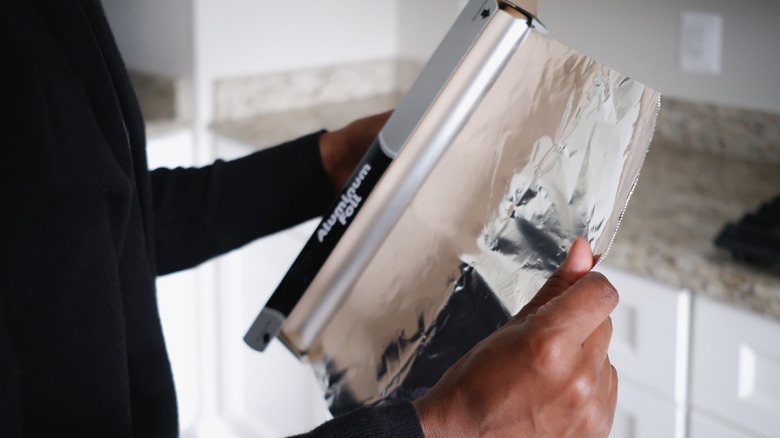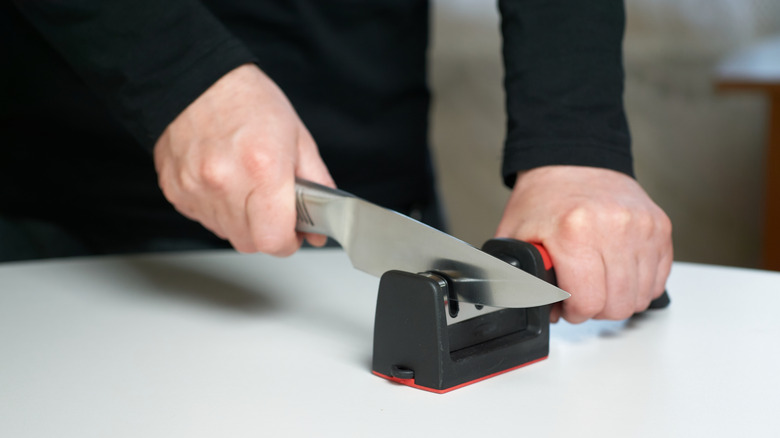What You Need To Know Before Trying To Sharpen Knives With Aluminum Foil
Using a dull knife is never fun — or safe. Just imagine trying to cut some chicken, for instance; with a dull blade, you're likely to turn it all into a shredded mess. Supposedly, you can use aluminum foil to sharpen blades like scissors and knives, but before you reach for the roll, there are a few things you should know about the process.
First off, aluminum foil can't actually sharpen blades, at least not in the sense you're likely thinking of. Instead, it is more likely to hone them, meaning that it straightens the cutting edge slightly. By contrast, sharpening removes microscopic amounts of metal from the blade in order to renew the edge. Aluminum foil is softer than the hard steel of the knife, so it's incapable of removing metal and creating that new edge. While it can clean the knife and remove miniscule debris that's interfering with cutting, it's not the same thing as proper sharpening. In fact, it can even potentially damage the blade by just scratching it up.
Trying to use aluminum foil to sharpen a knife can also be dangerous to you personally. The knife can all too easily punch through the soft aluminum and go right into your hand if you're not careful. Injuries from dull knives are even worse than sharp ones, since they tear instead of making clean cuts. Always take care when handling any cutting instrument, no matter how dull it is, and consider getting a proper sharpening or honing tool instead of foil.
How to sharpen a knife properly
You're better off sharpening your knife the right way than trying a hack that doesn't really work. To properly sharpen your knife, the best way is with a dedicated knife sharpening tool or whetstone. Unlike foil, these tools are hard and abrasive enough to actually sharpen a knife instead of just honing it. Before you begin, always ensure you know how to use a whetstone to keep yourself safe and avoid damaging your equipment.
Once you've sharpened the knife, take a little extra time to finish the blade. Finishing, also called stropping, refers to using a tool called a strop to clean the edge and remove leftover metal bits. To strop a blade, run it backwards (from the spine to the sharpened edge) over a leather stropping tool at the same angle you sharpen it at. It's not a strictly necessary step since it doesn't remove any more material than typical sharpening, but it's good for the knife and reportedly helps to make it that much sharper, so it is recommended, especially for high-end blades.
Ultimately, stropping after sharpening can increase your knives' lifespan and help keep it sharp for longer so you don't need to sharpen as often. On average, you should sharpen your knives every one or two months. However, every knife is different, and how often you should sharpen your kitchen knives depends on how frequently you use them and for what purpose.

